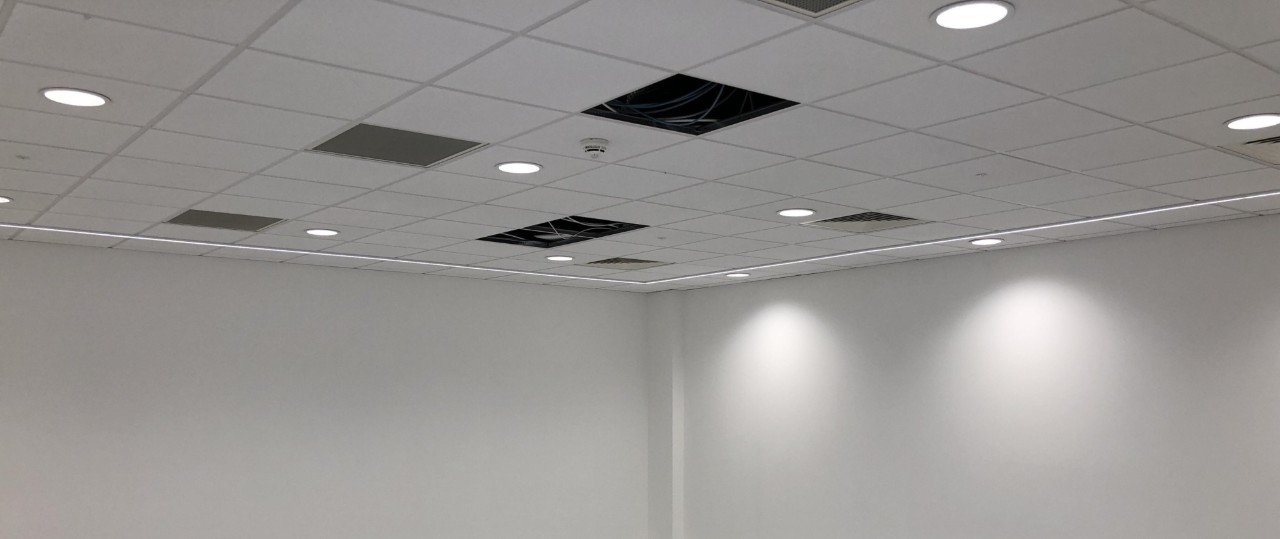Plasterboard / Suspended Ceilings
Suspended ceilings are a common form of dry lining and extremely popular within commercial buildings such as offices and shops. You can board over a ceiling with plasterboard, but another option is to hang a ceiling grid and then fit it with ceiling tiles and lights. This allows for a nice looking ceiling that hides all of the wires, nooks and crannies that you find on a commercial ceiling.
Why Use a Suspended Ceiling?
You can get a lot of great benefits by using a suspended ceiling. You might think that there are losses, however slight, to ceiling height that could be used for practical things such as storage – but most suspended ceilings are high enough that you will not notice much difference.
There are also lots of benefits to a suspended ceiling, such as the following:
- Hiding wires: You can more easily hide unsightly cabling from electrical equipment such as computers, air conditioning and internet facilities, or speakers with a suspended ceiling. For an area such as a commercial office, this makes for a much cleaner, safer space that is also easier to maintain.
- Ability to install lighting: Most suspended ceilings are built with the main intention of adding lighting, to illuminate the space below and eliminate the need for wall or floor lighting – thus adding valuable square footage to the area of a commercial or public setting.
- Fire protection: You can unobtrusively run pipe for sprinkler systems very easily with a suspended ceiling. This is a great safety feature suitable for slightly more industrial or even residential settings. Many buildings have stringent fire safety requirements, so this kind of ceiling design is ideal.
- Moisture resistance: One benefit of certain kinds of plasterboard is moisture resistance, which you can also get when using suspended ceilings. You can prevent mould and humidity with plasterboard ceilings or ceiling tiles so a suspended ceiling design is good for health and hygiene.
- Sound absorption: Acoustic ceiling tiles can make for great acoustical ceilings on their own, and by using resilient bars (a design that decouples the suspended ceiling from the joists, creating a gap that increases soundproofing) results are even better – and can rival music studio spaces.
- Quick installation: It is simple and very fast to install a suspended ceiling, either with plasterboard, ceiling tiles using concealed grid systems – this can help to keep a ceiling’s costs down. The ceiling’s ongoing maintenance costs are also helped by DIY ceiling kits for repairs and routine access.
Whether you choose ceiling tiles or plasterboard you will also get an opportunity for extensive customisation. There are many materials and finishes available, which can provide certain textures and features such as insulation.




